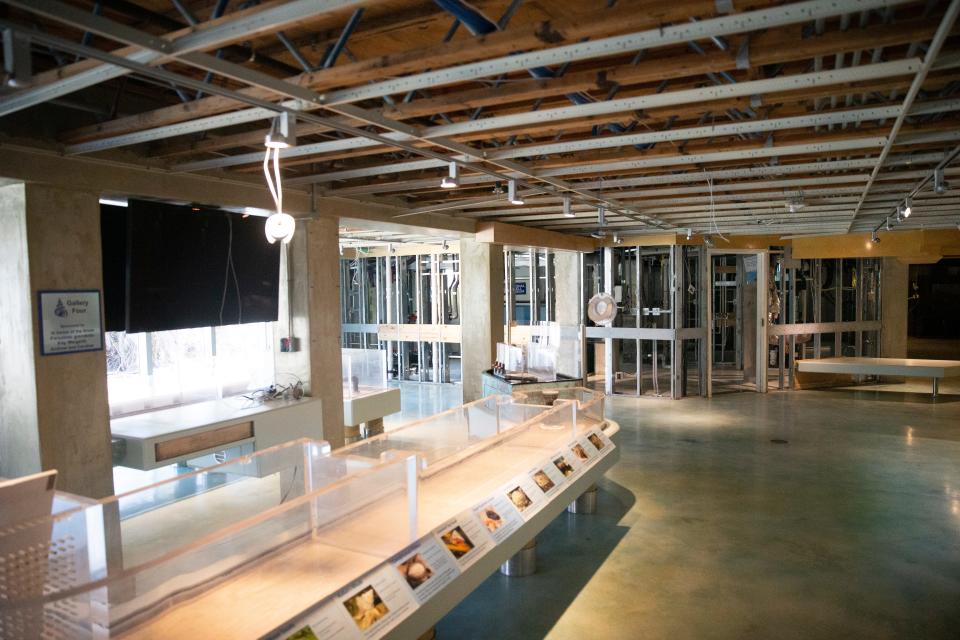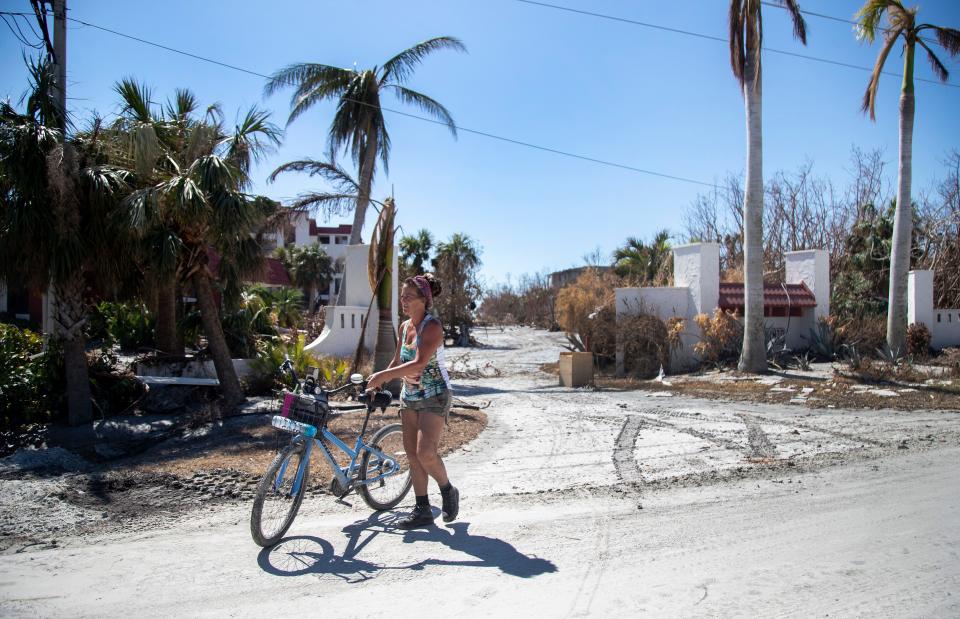City of Sanibel turns 50 in 2024. Here are 14 fun facts to know ahead of birthday celebration
Southwest Florida has just over a year to prepare for a special birthday next year.
The City of Sanibel will be turning 50 in 2024, with island officials asking residents for ideas on how to celebrate the milestone occasion.
Sanibel was officially incorporated into Lee County on Nov. 5, 1974. With the entire city sitting on the 12-mile island, its 6,000 residents are ready to celebrate the barrier island's history and way of life after a tough year following Hurricane Ian.
Ahead of its birthday celebration, here are some fun facts about Sanibel's lifestyle and lore to get started:
Sanibel lighthouse is back: Hurricane Ian comeback: Sanibel's Lighthouse Beach Park gets green light to open again
Sanibel Island is a Scorpio, incorporated on November 5
Starting off strong, Sanibel Island was incorporated in early November 1974 after then residents asserted control over development by establishing the "Sanibel Comprehensive Land Use" plan, which helped to maintain a balance between development and preservation of the island's ecology.
For some extra fun, Sanibel shares its birthday with the following celebrities:
Singer Art Garfunkel
TV personality Kris Jenner
Rocker Bryan Adams
Actress Tilda Swinton
Actress Famke Janssen
Actor Sam Rockwell
Actress Vivien Leigh
City of Sanibel may be turning 50 next year but the island is thousands of years old
While the city of Sanibel is still in double digits, the actual island has millenniums' worth of stories to tell. According to experts, the islands of Sanibel and Captiva were formed by the prevailing currents in the Gulf of Mexico about 6,000 years ago.
Sanibel Island was first inhabited by the prominent Calusa Tribe
Known as “mound people” or “pile dwellers” for the structures they inhabited, historians believe the Calusa Tribe inhabited the island dating back as far as 1200 AD. They were a significant tribe that dominated a large part of Southwest Florida through trade and an elaborate system of canals and waterways built by them.
The island remained an important Calusa settlement until the collapse of their rule soon after the arrival of the first Europeans in the mid-16th century.
You could walk across the entire 12-mile island within a day
Okay, this might be an obvious fact rather than a fun fact and it also depends on the person. However, it's worth noting the island's diminutive size at only 12 miles long and 3 miles wide.
With the multiple walking trails throughout, one could challenge themselves to run across the entire island within one day. Just have someone ready to pick you up at the other end, so you're not having to journey 12 miles back to your car.
How Sanibel got its name is a slight mystery, some theories dominate
Ever wonder how Sanibel got its name? Depending on who you ask, you may get a different story each time.
The biggest theory is the first recorded appearance of a harbor on Sanibel in 1765, which is shown on a map as Puerto de S. Nibel, with the "v" and "b" being interchangeable. This led many to believe the name may have evolved from "San Nibel". Alternatively, some think the name may derive from "(Santa) Ybel", which survives in the old placename "Point Ybel", where the Sanibel Island Lighthouse is located.
Other theories include Spanish explorer Juan Ponce de Leon in 1513, who called the island “Santa Isybella”, which has now been shortened to “Sanibel”. Another gives credit to Roderigo Lopez, the first mate of notorious pirate José Gaspar, after his lover Sanibel whom he had left behind in Spain.
The Sanibel lighthouse started lighting up the island in 1884
An iconic symbol for not just the island but the entire Gulf of Mexico, the Sanibel Island Light has been a fixture for the community for decades.
Located on the East-end of Sanibel, the landmark was built in 1884 after then residents petitioned for years for a lighthouse. The 98-foot tall iron structure was complete and was lit on August 20 by the first lighthouse keeper Dudley Richardson. It was one of the first lighthouses on the Gulf Coast.
The lighthouse was placed on the National Register of Historic Places in 1974. The City of Sanibel now owns the Point Ybel tract and structures despite the tower being still operational under U.S. Coast Guard control.
Arrrgggg! Sanibel might have some buried pirate treasure
Surrounded by shelled, sandy beaches and island vibes, it might be difficult to think about the beautiful barrier island once being a pirate refuge.
Sanibel once was a prime hideout for Black Caesar, one of the Gulf of Mexico's fiercest pirates in the 1700s. The West-African chief gained a reputation along the seas by establishing black market pipelines from Haiti, the Bahamas, Cuba, and frontier America. Along the way, he was able to grow his fortune and stand as one of the most feared pirates.
Black Caesar: The African Chief Who Was Captured by Slavers and Became a Pirate https://t.co/wCWKT8ipAy pic.twitter.com/YHjsTyybNe
— Ancient Origins (@ancientorigins) October 25, 2020
According to The Travel reports, Black Caesar used various islands, including Sanibel, to imprison both his enemies and brides.
Another pirate attracted to the charm and untamed nature of Sanibel was José Gaspar, who came to the region in the early 1800s.
It is rumored he buried his stolen treasure on Sanibel and then later built a prison on “Isle de los Captivas,” or Captiva Island, where he kept his female prisoners “captive” for ransom. Gaspar was later captured in 1821 by the U.S. Navy, but wrapped himself in chains and jumped overboard off his ship, rather than face imprisonment.
During his years on the water, both Ceaser and Gasper reportedly buried their many treasures on several islands, including Sanibel Island. Their loot has yet to be uncovered, which makes it a prime destination for treasure hunting.
It is known as the 'Seashell Capital of the World'
Seashell is almost synonymous with Sanibel beaches at this point.
Sanibel is home to over 250 shell species, many coating the perimeter of the island with different shapes and colors of shells. It’s one of the very few islands in Florida that run perpendicular, which causes ocean currents to have the beaches primarily flush water downward.
See Sanibel's rarest shells: Expert lists 10 rare seashells you can find on Florida beaches. Good luck!
Just offshore where the water isn't clear, Sanibel has an area, similar to a sandbar called a ground-level swell, that forms and pushes shells to its beaches mostly intact.
Speaking of shells, Sanibel hosts the only shell museum in the country
Curious about the seashells you just collected? Want to know what used to live inside them? Maybe you just collected a rare one and you want to know its name.

For all of your hard-shelled questions, the Bailey Matthews National Shell Museum on Sanibel is your destination. It's the only dedicated shell museum in the entire U.S.
The Causeway opened in 1963, connecting islanders to the mainland
For decades, islanders would be transported to Cape Coral by ferry. However, a causeway linking Sanibel and Captiva to the mainland was opened in May of 1963, resulting in an explosion of growth.
Due to the surge of growth, the City of Sanibel passed new restrictions on development after it was incorporated in 1974. They aimed to control the development in the best interests of wildlife and residents, as well as the natural beauty of the island.
More than half of Sanibel and Captiva Islands are dedicated to wildlife refuges and nature preserves
If it wasn't clear before, the City of Sanibel loves nature and is steadfast on its journey to preserve it. The islands are home to 230 types of birds, 250 different shells, and 50 species of native fish.
The island hosts these preserves:
Bailey Homestead Preserve, Sanibel-Captiva Conservation Foundation
Frannie's Preserve
Bailey Tract
No red lights ahead! There are no traffic lights or street lights on Sanibel
Sanibel truly prioritizes relaxed, island living unlike anywhere else. Visitors will not find a single traffic light or street light anywhere on the island. Instead, traffic conductors may occupy certain intersections to help speed up any jams that happen.
Bike riders rejoice! Sanibel is extremely bike-friendly
Along with zero traffic lights, Sanibel, along with Captive, have roughly 22 miles of traffic-free bike trails for riders to enjoy.

If you didn’t bring your bike with you on your Sanibel vacation, you can still experience the island on two wheels. You can find several places along Periwinkle Way to rent a bicycle, such as:
Billy's Rentals: 1470 Periwinkle Way, Sanibel, FL
Billy's Bike Shop: 2437 Periwinkle Way, Sanibel, FL
Finnimore's Bike and Beach Rental: 2353 Periwinkle Way, Sanibel, FL
SBL Outfitters: 2330 Palm Ridge Rd #12, Sanibel, FL
Grab your poles and nets. Both Sanibel and Captiva are a fishing mecca
With hundreds of native fish species, the islands are known for being havens for fishermen.
In the 1930s, Sanibel became especially known for its Tarpon fishing just offshore. Tarpon had regularly been caught with shark hooks tipped with bait, yet the first tarpon caught with rod and reel was taken in San Carlos Bay. With the popularity surrounding the shallow waters of the island, tales of Sanibel gradually spread to wider audiences, and some flocked to the island for a vacation.
Nowadays, tarpon fishing is still bringing visitors to Sanibel.
This article originally appeared on Fort Myers News-Press: Sanibel Florida is turning 50 next year. Here's 14 facts to know

